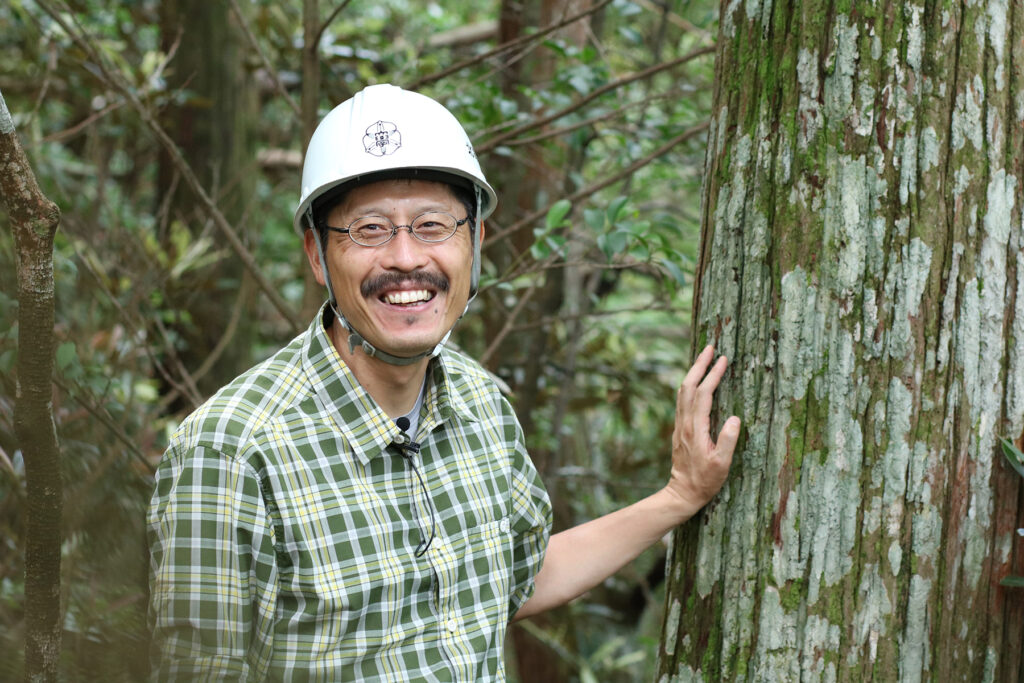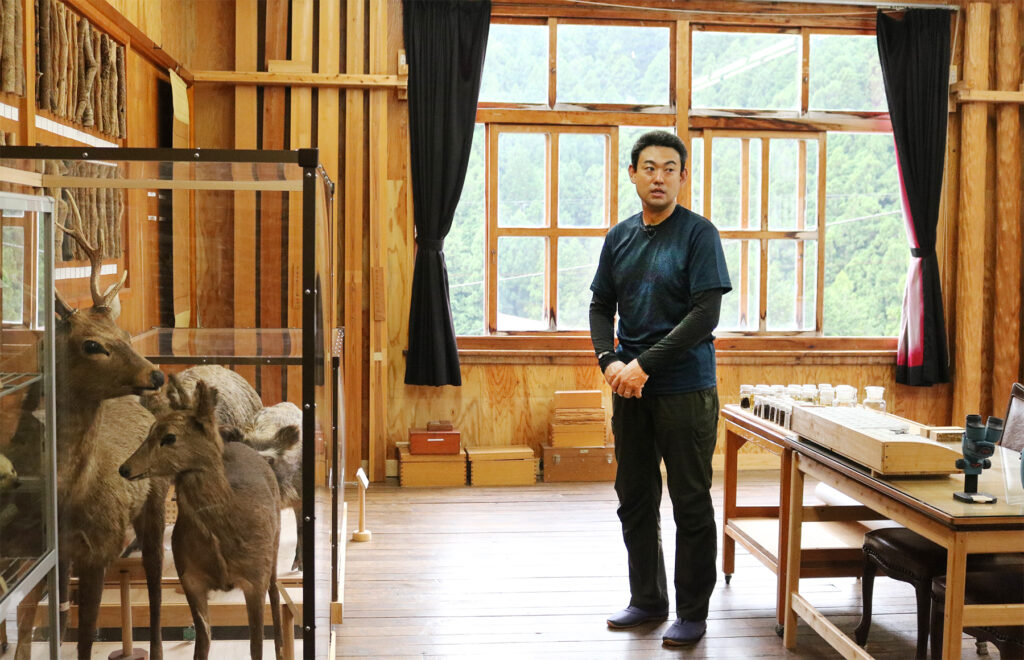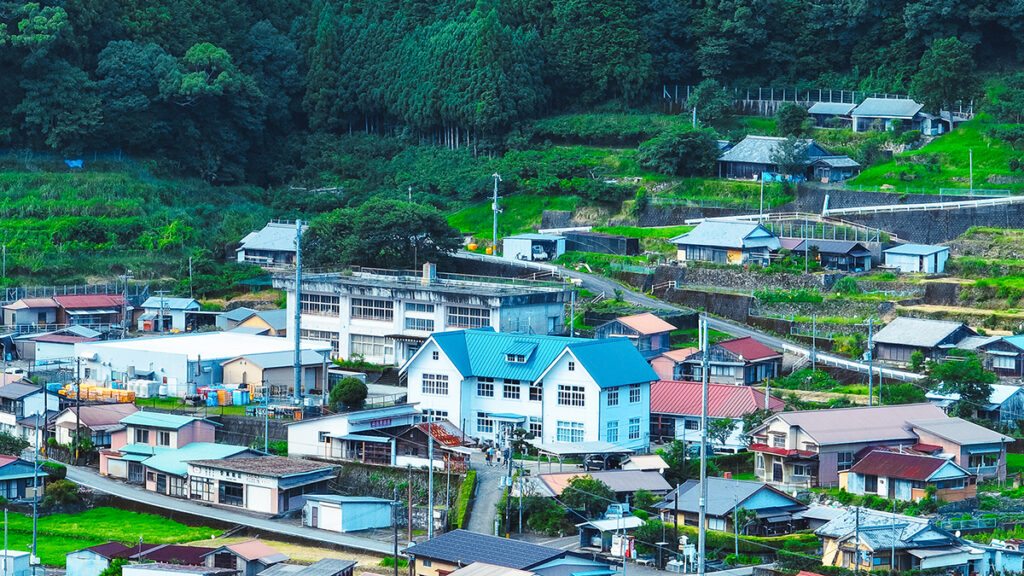
Hokkaido University Wakayama Research Forest in Kozagawa town, Wakayama Prefecture (Drone image by GEOGRAMS)
Situated at the northern end of Japanese islands, Hokkaido has different vegetation than the main island. In 1925, Wakayama Research Forest was established at Hokkaido University to allow students to study mainland forestry and receive practical forestry training. It was around 100 years ago that Wakayama Prefecture offered its land, and the University purchased 427 hectares in Kozagawa town. Hokkaido University owns six other research forests in Hokkaido, collectively making it one of the most extensive research forests in the world.
"In the 1900s, demand for lumber for building purposes soared in Japan, and cedar and cypress trees were actively planted in many parts of the mainland. Hokkaido University students also needed to learn about the characteristics and uses of these planted forests in the temperate zone," said Professor Masahiro Nakamura, Director of Wakayama Research Forest.

Professor Masahiro Nakamura, Director of Wakayama Research Forest, explains the characteristics of the forest. (Photo by Aprilia Agatha Gunawan)
At that time, the forest served not only educational and research purposes, but was also an asset forest; until the 1970s, the timber and charcoal from the research forest were commercially marketed, providing an important source of funding for the University. "Our facility used to employ many local people to plant trees and manage the forest," said Professor Nakamura, indicating that the forest has also been a valuable asset for the local people.
The Wakayama Research Forest is characterized by the warm and rainy climate and steep terrain, characteristics of the Kishu region. In order to manage the entire forest, 70% of which is steeply sloped, four monorails totaling 3,225 meters in length have been laid to transport people and materials. These monorails, which at first glance look like roller coasters, climb slowly but steadily up steep slopes.
The Wakayama Research Forest is largely divided into preserved forests and planted forests. In the preserved forests, human intervention is minimized to protect rare species, such as the endemic Japanese umbrella pine. "In principle, we have not touched the preserved forest since we purchased it in 1925, so we can see the succession of vegetation in the natural condition," said Professor Nakamura.
Meanwhile, research is being conducted in planted forests to thin coniferous forests of cedar and cypress at various intervals and return them to mixed forests with broadleaf trees. Planted cedar and cypress forests, which have increased too much in Honshu, are said to have problems concerning pollen dispersal, low biodiversity, and vulnerability to environmental changes. Hikaru Iguchi, a student at the Graduate School of Environmental Science, says, "Surprisingly, not many large-scale studies have been conducted to revert coniferous forests to mixed forests. With the support of local residents, we created four trimmed strips of 5m, 10m, and 20m widths and observed the regeneration." He continued, "The results of this experiment showed that if the trimming was too wide, there were adverse effects such as drying of the topsoil and sediment transfer caused by rainwater. However, the time scale of forest development is much greater than that of humans. It is important to continuously observe and evaluate impacts in the long term, such as decades or centuries."
Atsushi Takaki, another student at the Graduate School of Environmental Science, is studying the effects of animal carcasses on soil microorganisms and insects. Japanese mountains are known to have increasing numbers of deer and other animals. "We know that decomposition of animal carcasses contributes to soil microbial biodiversity. Especially in planted forests, we have found that, when animal carcasses are present, soil microorganisms quickly become as diverse as those in natural forests," he explains.

Atsushi Takaki (left) and Hikaru Iguchi (right), students at Graduate School of Environmental Science. (Photo by Aprilia Agatha Gunawan)
Many other exciting studies are being conducted at the Wakayama Research Forest, including research on the effects of global warming on soil and trees, and the relationship between genetic diversity of trees and insect resistance. In addition, various educational activities are taking place, including educational training for forestry students, workshops, and hands-on learning sessions for children and the general public.

Kinya Ito, the head of Wakayama Research Forest technical team, giving a tour of the specimen room. (Photo by Aprilia Agatha Gunawan)
Wakayama Research Forest is also known for its unique building - a two-story Western-style building completed in 1927 that stands out in the small village. Equipped with lecture rooms, specimen rooms, and accommodations, the building is used by 1,500 to 2,000 people a year, including researchers from Japan and abroad as well as students from Hokkaido and local universities. Because of its long history and well-preserved condition, the building was designated as a National Tangible Cultural Property in 2013. The local residents still play important roles in maintaining the facility and serving meals, allowing researchers to focus on their education and research activities.

The office building (the white Western-style building with a teal roof, in the center) standing in Hirai, Kozagawa Town. (Drone image by GEOGRAMS)
Professor Nakamura envisions the future of the research forest: "I would like to continue to contribute to the local community, and at the same time, I want our research forest to be supported by the local community. I would like to pass on our 100-year history to future generations so that our forest can produce more research results that contribute to solving problems in Japanese forestry and under global climate change."
Written by Naoki Namba








